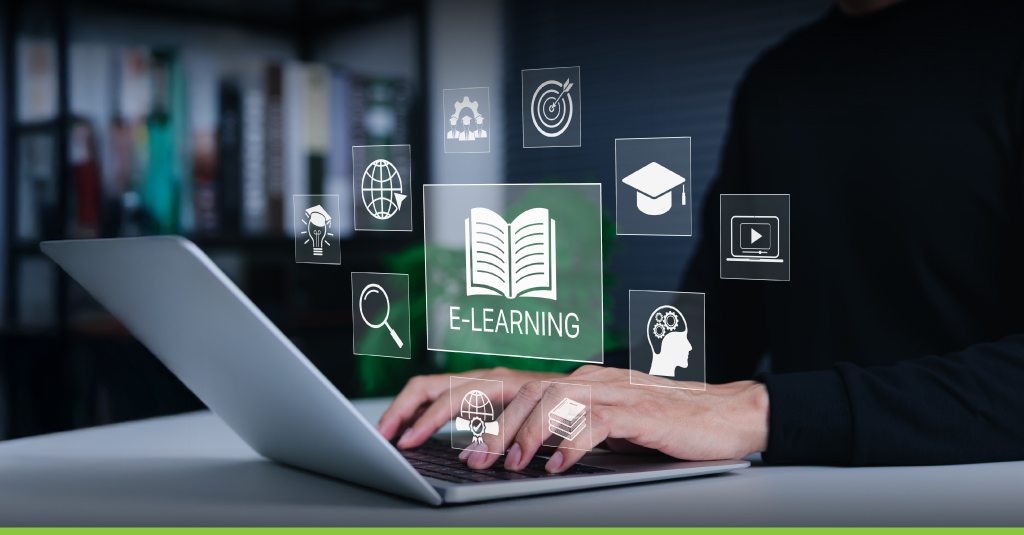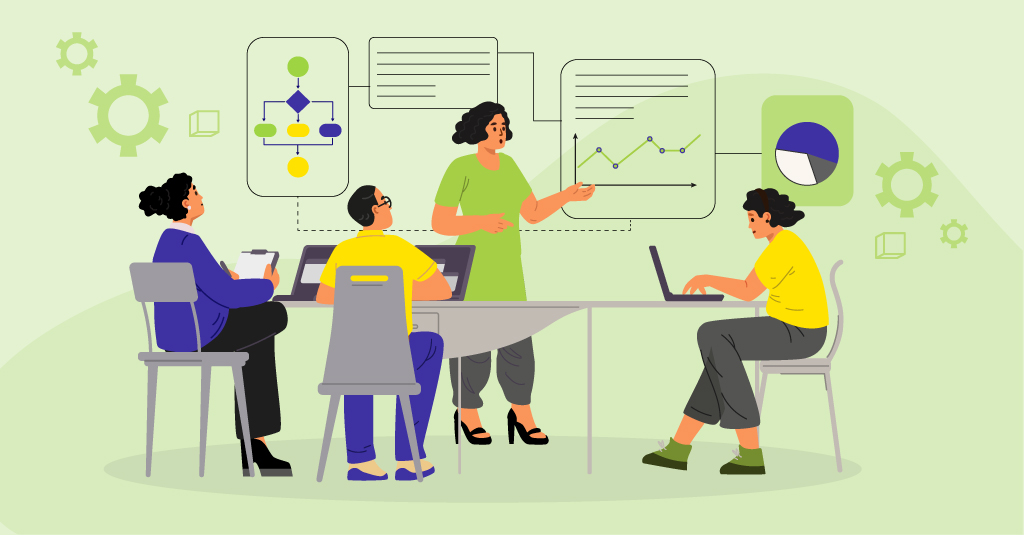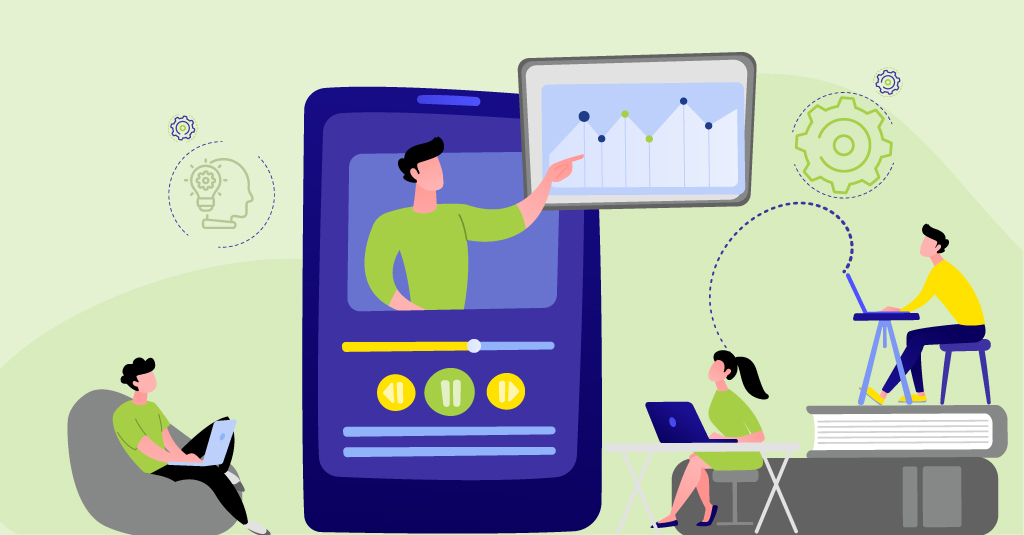Technology isn’t just evolving, it’s rewriting itself in real time. Cloud architectures shift monthly, new AI tools appear overnight, and security frameworks demand constant re-certification. For IT teams, “staying updated” has become less about attending a course and more about staying in sync with a moving system.
In this environment, learning can’t wait for schedules or classrooms. It has to live where the work happens, embedded, adaptive, and instantly available. That’s exactly what eLearning delivers. It gives IT professionals continuous access to knowledge that grows as fast as their codebase, while giving L&D teams the flexibility to roll out updates, track engagement, and measure impact without missing a beat.
Static presentations and generic tutorials are no longer the mainstay of modern eLearning. This type of learning environment, which is intelligent, iterative, and outcome-driven, assists IT firms in keeping up with innovation rather than chasing it.

The Skill Gap Challenge in IT
The issue isn’t lack of will, it’s lack of adaptability. Conventional training delivery can’t meet the continuous learning demands of IT roles that rely on instant updates and just-in-time knowledge.
This is where learning agility becomes a competitive advantage, not just a nice-to-have.

What’s Not Working in Traditional IT Training
Many IT training programs still rely on:
-
Periodic workshops or bootcamps that are expensive and outdated within months
-
Overloaded classroom sessions that ignore Cognitive Load Theory principles
-
One-size-fits-all instruction, which fails to account for varied experience levels
-
Minimal reinforcement or follow-up, resulting in rapid forgetting
These approaches often cause frustration among learners and L&D teams alike. Without reinforcement, skill transfer, or measurable outcomes (as highlighted in Kirkpatrick’s Model), even the best-intentioned training investments underdeliver.

Why eLearning Outperforms for IT Skill Development
eLearning isn’t just about flexibility; it’s a learning strategy built for rapid change and sustained relevance. Here’s why it’s the best fit for IT teams:
1. Continuous Learning at the Speed of Tech
2. Adaptive, Personalized Paths
AI-enabled learning systems can tailor content by role, experience, and learning objectives, applying Bloom’s Taxonomy to ensure progression from “remember” to “create.”
3. Reduced Cognitive Load
eLearning helps developers and engineers understand complicated technological ideas more quickly by chunking lectures and including visual aids (as recommended by Cognitive Load Theory and Dual Coding).
4. Global Scalability and Cost Efficiency
IT staff from different places may access consistent, current material through eLearning without having to worry about travel expenses or schedule issues.
5. Built-In Engagement and Motivation
In order to maintain motivation and concentration, gamified components, simulations, and scenario-based modules adhere to Gagne’s 9 Events of Instruction and the ARCS model (Attention, Relevance, Confidence, Satisfaction).

Practical Ways to Keep IT Skills Current Using eLearning
Take into consideration these doable actions if your IT company wishes to remain ahead of the talent curve:
-
Link learning pathways to new skills like automation, cloud security, and AI ethics.
-
To improve long-term recall, employ spaced reinforcement through tests, nudges, and brief summaries.
-
For applied learning, combine self-paced courses with online labs or mentorship.
-
Use your LMS's analytics to monitor completion, engagement, and skill gaps.
-
Directly include certification preparation into eLearning programs (such as AWS, Azure, and CompTIA).
These methods follow the ADDIE paradigm, assess skill requirements, create pertinent modules, develop and deploy iteratively, and routinely assess results.

Real-World Example - Rapid Cloud Upskilling at Scale
Recently, a multinational telecom and IT company required to train more than 4,000 engineers on cloud migration frameworks in less than six months. They introduced a mixed eLearning curriculum in place of conventional classroom sessions:
-
Self-paced learning modules for foundational cloud concepts
-
Virtual labs and sandbox environments for applied skills
-
Peer discussion forums for real-world problem solving
-
Ongoing reinforcement through micro-assessments
The result? Deployment efficiency increased by 22%, while certification completion rates increased by 38%. This example shows how well-thought-out digital learning results in observable business consequences.

Common Pitfalls to Avoid
Even the best eLearning strategies can fall short if not implemented thoughtfully. Avoid these common missteps:
-
Treating eLearning as “content delivery” instead of experience design
-
Ignoring learner feedback or data-driven iteration
-
Overloading modules without considering attention span or learning fatigue
-
Neglecting accessibility (e.g., non-captioned videos or complex navigation)
Good eLearning design follows learning science principles, balancing interactivity, pacing, and cognitive ease to sustain engagement over time.

Conclusion - Building a Culture of Continuous Learning in IT
Skills are the new currency in the IT industry. eLearning is a basis for both organizational agility and personal development, not merely an effective delivery mechanism.
IT executives may establish an environment where learning keeps up with innovation by integrating learning into regular operations, coordinating with business goals, and regularly updating information.
If you’re exploring how to strengthen your IT team’s learning infrastructure or need examples of impactful digital programs, explore Upside Learning’s eLearning for Telecom and IT solutions.
FAQs: Custom vs. Off-the-Shelf eLearning
If your workflows, tools, or brand vibe are one-of-a-kind- or if behavior change matters- custom’s your cheat code.
Yep, upfront it’s lighter on the wallet. But for long-term wins and role-specific skills? Custom flexes harder ROI.
For sure. Start with off-the-shelf for the basics, then sprinkle in custom modules where it really counts.
Depends on how ambitious you get- usually weeks to months. Planning ahead keeps you from sweating deadlines.
For general topics, yeah. For real-life scenarios or changing habits? Engagement can ghost you.
Totally. You own the content, so edits, tweaks, or upgrades? All yours.
Custom can adapt paths, toss in interactive exercises, and mix multimedia to match every brain type.
Mostly basic stuff- completion rates, quiz scores. Custom digs deeper: behavior, skill gaps, all the good analytics.
Quick wins? Off-the-shelf. Lasting change? Custom. Pick your lane- or flex both.
Yep. They make it seamless- fast deployment, tailored experiences, or a mashup.

Pick Smart, Train Better
Picking off-the-shelf or custom eLearning? Don’t stress. It’s really about your team, your goals, and the impact you want. Quick wins? Off-the-shelf has you covered. Role-specific skills or behavior change? Custom eLearning is your move.
Upside Learning makes both options effortless. Whether it’s ready-to-roll courses or fully tailored experiences, we handle the heavy lifting- interactive modules, adaptive paths, branded visuals, and analytics that tell you something. No wasted time, no generic content- just learning that sticks.
Ready to level up your team’s learning game? Connect with Upside Learning today and see how we make training fast, engaging, and results-driven. Your team deserves training that works- and we deliver.
















